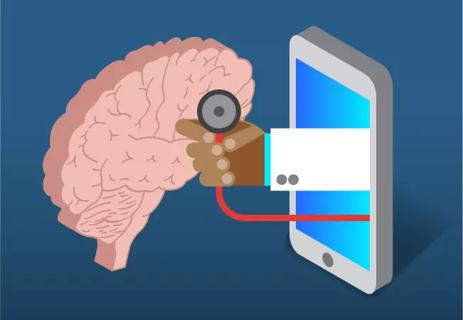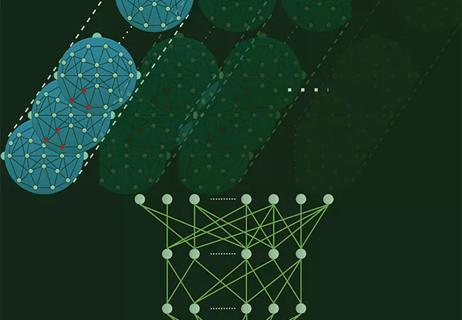Novel collaboration is underway to foster innovation – and a real-world invention

Cleveland Clinic’s Neurological Institute has joined forces with Case Western Reserve University’s Case School of Engineering to inaugurate the Cleveland NeuroDesign Innovation Fellowship, designed to train neurosurgeons and biomedical engineers to be successful innovators.
Advertisement
Cleveland Clinic is a non-profit academic medical center. Advertising on our site helps support our mission. We do not endorse non-Cleveland Clinic products or services. Policy
The program starts by embedding fellows into clinical practice to identify unmet needs, then takes them through the process of design and building a clinically relevant product together, and finally sets the stage for obtaining a patent and commercialization. The fellowship — with its focus on innovation in clinical neuroscience exclusively — is unique among the few other healthcare biodesign fellowships in the United States.
“Prior to building this program with Case, Cleveland Clinic didn’t have this type of formal approach to innovation in place,” says NeuroDesign On-Site Medical Director Sean Nagel, MD, a neurosurgeon in Cleveland Clinic’s Center for Neurological Restoration. “Physicians and other healthcare workers who were struck with an idea would submit it to Cleveland Clinic Innovations, our health system’s commercialization arm. But there are other approaches that may more efficiently move a field forward. In some situations, having a proactive, systematic strategy is preferable.”
The first cohort of four fellows started the 10-month fellowship program in September 2020. The fully paid fellowships are funded by Cleveland Clinic’s Neurological Institute, the Provost Fund at Case Western Reserve University and an anonymous philanthropist.
The fellows have a variety of backgrounds. One is a fourth-year Cleveland Clinic neurosurgery resident. Another is a postdoctoral fellow at Case School of Engineering, working on seizure suppression. The other two have master’s degrees in biomedical engineering and were already working in industry, one in a startup and the other in a large company as a consultant and business analyst.
Advertisement
“Their diversity in outlook and skill sets are fundamental to building a team that is tasked with taking the innovation process through to an end product,” says Dr. Nagel.
The fellowship encompasses the complete process of inventing a novel health technology, using the Stanford Biodesign Method. It began with a one-week intensive introduction to innovation and biodesign. The fellows next launched into the innovation process involving three key overlapping steps, detailed below. At the end of each step, the team meets with their supervising committee of advisers, consisting of clinical and innovation leaders and stakeholders within and outside of the sponsoring institutions.
Step 1: Identify. The team is currently immersed in clinical neurosurgery, observing operations and procedures and conferring with surgeons, technicians and nurses on topics as diverse as image guidance, neuromodulation devices and pain control. Their goals are to observe 50 procedures, identify 200 unmet needs and develop a list of ideas for a team project.
“Everyone at the Neurological Institute has been excited about having the fellows around,” says Dr. Nagel. “They appreciate having a team dedicated to trying to meet their needs and being a sounding board for their own ideas.”
The fellows will next narrow their ideas down to a few promising concepts and present them to the advising committee. One will be selected.
Step 2: Invent.Over the subsequent three months, the fellows will work as a team to design, build and test prototypes to address the selected problem. The best ones will be pitched to the committee, which will choose the one most likely to succeed in meeting the clinical need and coming to fruition.
Advertisement
Step 3: Implement. As the team further tests and adjusts their chosen prototype, they will apply for intellectual property protection and develop a business plan. After two months, a final presentation is made to the committee, and the team will move forward with the plan.
Dr. Nagel emphasizes that key to program success is the equal and collaborative partnership between the clinical and engineering sponsors. Leaders from both institutions share directorship of the program, and fellows have access to resources and expertise from both campuses.
At the start of the fellowship year, program directors ensured that all neurosurgery and bioengineering staff knew about the course, and they solicited staff support in mentoring and guidance. They encouraged staff to meet virtually or in person with the fellows, permit surgery observations and share insights on their practice, challenges and needs. Staff whose practice relates to the ultimate project will continue to provide feedback and connect the fellows with potentially interested parties.
“Innovation and collaboration have always been integral to both institutions, and the Cleveland NeuroDesign Innovation Fellowship is aligned with this shared belief,” observes Dr. Nagel. “Everyone recognizes that the ultimate goal is better patient care, and we’re eager to see what the fellows come up with at the end of the program.”
Dr. Nagel expects the fellowship to continue after this pilot year, and the program is now planning for the next cohort to start in autumn 2021.
Advertisement
Advertisement

Novel ‘assessment center’ will be a partner in care by serving as an engine of structured data collection

Telemedicine use remains higher than before the pandemic in all groups, but disparities linger

Taking virtual reality-integrated technology from silver screen to clinical laboratory

Strong performance from early models heralds eventual reshaping of care

Novel approach is improving presurgical evaluation

Important progress toward predictive analytics in MS and PD

A quick review of 3D-printed models, intrasaccular flow disruption and flow diverter stenting

One of first reported uses of the technology for a cerebrovascular malformation